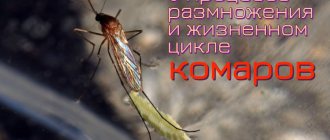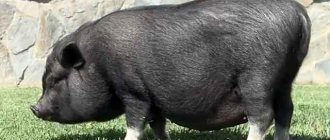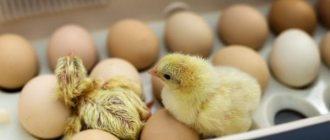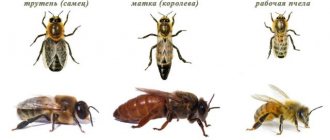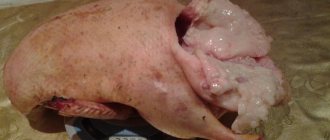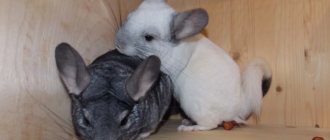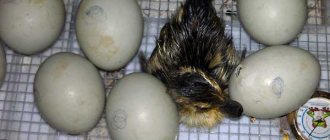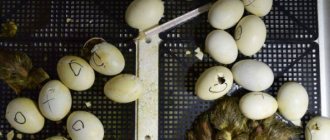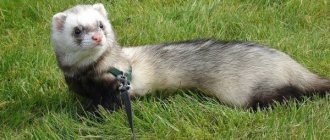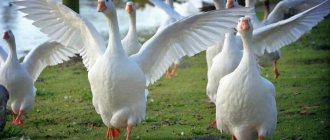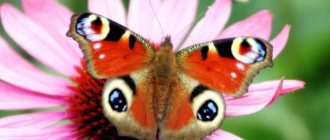A school biology course explains in general terms how birds reproduce. And yet, many aspects of this issue remain a mystery to most people. Birds are oviparous creatures, among which there are no viviparous species. Science explains this by the fact that the bird lives most of its life in flight. In this article we will talk about interesting features of bird reproduction and facts that you most likely did not know about.
Seasonal processes
Finding a partner, courtship and reproduction in birds in the wild are considered the most complex processes. This is due not only to the peculiarities of instinctive behavior. We are talking, first of all, about the complex structure of the reproductive system of birds.
The bird's body is equipped with paired genital organs and tracts. Only their left halves are used for reproduction. The reason is that large eggs are not formed in paired ovaries.
The male is sterile all the time outside the mating season. Its seminal fluid is generated exclusively during the courtship and reproduction stage. This signals that he is ready for intercourse. The mating season of birds occurs in spring and summer. At the same time, with the onset of spring, their testes grow in volume almost a thousand times.
General characteristics
Before we talk about how birds mate and reproduce, let's discuss their characteristics and the biology of this class of warm-blooded oviparous birds.
The distinctive features of birds are as follows:
- The nervous system is highly developed.
- Various options for adaptive behavior.
- The body has a high temperature. This occurs due to the intensive metabolism of the bird class.
- Compared to other animal species, this species is endowed with a special mechanism that facilitates the rapid reproduction process. This feature is manifested in the ability to hatch eggs, as well as in feeding chicks.
- The presence of special organs called adaptive. They make it possible not only to fly, but also to move freely on land. And some individuals can also swim in bodies of water, moving freely along the water surface.
It is these above-mentioned abilities that allow birds to reproduce so actively and massively throughout the planet.
Stages of creating offspring
The appearance of offspring involves several important points.
First: nest construction. In polygamous couples, the females do this. Birds that mate for life build a home together. Nest shapes, construction materials and sizes vary depending on the species of birds.
Second: hatching the eggs after they hatch. Bald patches form on the female's abdomen at the location of the eggs. This contributes to the formation of an optimal temperature regime, which is 38°-40°C. Not all birds develop so-called “roost” spots. In particular, geese hatch their eggs under a layer of down.
Third: protection of the nest and food. This is the task of males. While the partners are busy incubating, they play the role of breadwinners and protectors.
Mating in birds
This process in birds differs from similar manipulations in mammals. The reason is that birds do not have a special opening, and their reproductive tract extends to the cloaca.
The breeding pattern of birds is as follows: the male presses his cloaca to the area of the partner’s cloaca and injects seminal fluid into it. The sperm moves into the oviduct, where it is stored from several days to several weeks. Fertilization occurs in the initial part of the oviduct. Afterwards, the egg moves towards the cloaca, gradually becoming overgrown with layers of shells. In the female's uterus, the eggs are covered with a dense calcareous shell, after which they are ready to fall out of the cloaca.
Sections of the female oviduct
The oviduct, on one side, is connected to the cloaca, and on the other, to the body of the bird. It consists of a couple of compartments. The first contains special glands that secrete protein. The egg stays here for about six hours, where it is covered with a special protective layer.
In the second section it is thinner; the shell membranes begin to cover the egg.
Another section is the uterus. The egg comes here for 20 hours. During this time, it begins to be covered with lime shells, as well as other coloring pigments.
And the last section. It's called the vagina. It is from here that the egg ends up in the cloaca and then comes out. The time it takes for an egg to “travel” through the oviduct is on average 24 hours. It's from the chicken. But the dove’s is already longer, 41 hours.
Reproduction and nesting of urban birds
Not everyone knows how the birds we see everywhere mate. The mating system of most birds is identical. Let's look at some of the nuances using the example of birds that live near us.
For example, pigeons. They have two types of mating:
- within natural conditions,
- forced mating.
In the first case, the male chooses a partner independently. In the second, the female candidacy is selected by a person based on optimal parameters and physical characteristics. Pigeons hatch chicks after 17 days.
Crows build a new nest every season. Their favorite places are trees in squares, courtyards and parks. The mating season falls on March-April. The clutch does not exceed 6 bluish eggs. The incubation time for crows is 19 days.
Chick development
Description of Turkish takla pigeons
The harmonious development of young animals depends on proper maintenance and nutrition.
Care of offspring
Newborn parrots develop rapidly.
Care involves the following actions:
- Cleaning. When the chicks reach 2 weeks of age, you need to do a general cleaning of the nest: remove unfertilized eggs and all debris. Before this, transfer the babies to a warm box or small box. Inspect all chicks. Dirt sticks to their paws, which interferes with the normal growth of their limbs. You should immerse the babies' paws in warm water and let the dirt come off. Fresh birch sawdust is placed on the bottom, the chicks sit on them, and the house is installed in its old place. Clean the house as soon as possible to avoid overcooling the cubs.
- Nutrition of young animals. For the first 4-6 days, the female feeds the cubs with milk from the crop. After this, the food is softened grains, which the mother places in advance in the crop and feeds the children.
- Body mass. Weight increases fastest in the first 2 days. It increases by 200%. On the 23rd day, the greatest mass gain occurs, and a decrease in weight is observed due to the energetic body movements that the bird performs before the first flight.
- Departure. The first flight occurs on the 35th day. After this, the chicks are left with their mother for another 2 weeks.
When can you plant
Young animals may be diagnosed with the diseases “helicopter” and “splits” - curvature of the paws. The cause is staphylococcus infection or reproduction of closely related budgies. You can help the parrot only before it flies out of the house, so you should contact an ornithologist or veterinarian in time. 2 weeks after the start of flights, they are transplanted into a separate large cage. There the birds fly until sexual formation - molting.
Breeding poultry
We will talk about birds that are most often kept on farms. Among them are turkeys, geese and chickens. The process of their mating occurs under human supervision and control.
Sexual maturity of birds occurs on the 25th day of life. In egg-laying breeds (chickens, geese), this occurs several days earlier. Mating occurs with 10 females at once and is repeated at least 50 times a day. If the number of females is exceeded, empty eggs may appear.
So, the male climbs onto the hen, grabs her neck with his beak and transfers seminal fluid through the cloaca. Sperm stays in the female's body for about 20 days. All this time, the hen regularly lays eggs.
Fun fact: Roosters do not have a reproductive organ. Some species of poultry (geese, ducks, ostriches) have a genital organ in the form of a cloaca turned outward.
To determine whether an egg is fertilized, a flashlight and an ovoscope are used. If there is a blood clot inside the egg, then the chick will soon be born.
How to determine fertilized eggs?
If a poultry farmer breeds chickens for the purpose of hatching chicks, it is very important to know whether the resulting egg is fertilized or not. Laying hens lay eggs in any case and regardless of the presence of a rooster, but chickens reproduce only with the help of males. Unfertilized eggs do not hatch into chicks - this is because such eggs do not contain an embryo.
A fertilized egg can be determined by the presence of a small amount of blood clots in the yolk. Clearance is required for blood detection. Three things can help identify fertilized eggs:
- natural bright lighting;
- artificial light source;
- Ovoscope is a special device for instant determination.
The egg of interest must be taken to a dark place. It is placed with its blunt end towards the light, after which it is tilted so that the internal contents can be examined in detail. The greatest difficulties arise with the clearance of brown eggs, so for placing under a chicken it is better to select specimens of light shades, ideally white. There is no need to examine the contents for a long time: thanks to the intense light, identifying the embryo will not be difficult even for a novice poultry farmer.
In a fertilized egg, several blood vessels are observed in a small area in the lumen. If during observation no blood clots or black spots are detected, the egg is not fertilized and is not suitable for hatching.
There are also cases when it is impossible to determine the presence of a clot and spots in the center of the yolk, but at the same time a blood contour along the edge is clearly visible. This indicates a fertilized egg, in which the embryo died for one reason or another. Such specimens will also not bring any benefit when breeding chickens: none of them will hatch.
Two roosters in one yard: leveling out conflicts
If the poultry yard is organized for the purpose of obtaining chicks, it is impossible to do without males. However, they have difficulty getting along with their competitors: other contenders for the female often show aggression.
Methods for resolving conflicts between male roosters, geese, and turkeys:
- choose males from one brood,
- give preference to balanced individuals,
- let one of the two be younger, since he will show less attention to females,
- transplant the young animals to the old rooster, and not vice versa, since strong individuals in their territory will kill the old weakened rooster and continue to fight among themselves for the new territory.
It is extremely important to avoid civil strife, since all male activity should be aimed at creating offspring.
Fallowing guinea fowl and quails in artificial conditions
Other types of birds are also bred on farms. These are guinea fowl, ostriches, swans, pheasants and quails. The priority for humans is to create favorable conditions for pets for comfortable reproduction.
Guinea fowl require large territories. Otherwise, they are unpretentious and very productive, and their eggs are larger than chicken eggs. In addition, they easily get along with other inhabitants of the poultry yard: chickens, turkeys, geese.
Keeping quails has become a profitable business, since their eggs are twice as expensive as chicken eggs, and the meat is considered dietary. The payback on breeding occurs quickly, the costs of the project are relatively low.
Breeding ostriches, swans and pheasants
Ostriches are polygamous, so one sire is enough for a harem. During the mating season, it becomes aggressive, and its legs and neck become reddish in color. During the day, the eggs are incubated by the partner; at night, the partner takes over this responsibility.
Swans mate for life. They build nests up to three meters in diameter, where they incubate 3-5 eggs for up to 40 days. The chicks are born already covered in fluff. Parents take care of their children for up to a year.
Males are aggressive and behave like roosters. Therefore, the same requirements apply to them. There are no more than three partners per manufacturer.
If the article interests you, share it on social networks and leave comments.
